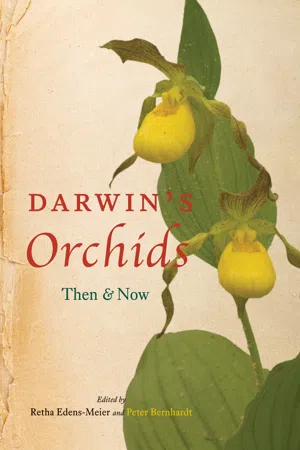
Darwin's Orchids
Then and Now
- English
- ePUB (mobile friendly)
- Available on iOS & Android
About This Book
For biologists, 2009 was an epochal year: the bicentennial of Charles Darwin's birth and the 150th anniversary of the publication of a book now known simply as The Origin of Species. But for many botanists, Darwin's true legacy starts with the 1862 publication of another volume: On the Various Contrivances by Which British and Foreign Orchids Are Fertilised by Insects and on the Good Effects of Intercrossing, or Fertilisation of Orchids. This slim but detailed book with the improbably long title was the first in a series of plant studies by Darwin that continues to serve as a global exemplar in the field of evolutionary botany. In Darwin's Orchids, an international group of orchid biologists unites to celebrate and explore the continuum that stretches from Darwin's groundbreaking orchid research to that of today.Mirroring the structure of Fertilisation of Orchids, Darwin's Orchids investigates flowers from Darwin's home in England, through the southern hemisphere, and on to North America and China as it seeks to address a set of questions first put forward by Darwin himself: What pollinates this particular type of orchid? How does its pollination mechanism work? Will an orchid self-pollinate or is an insect or other animal vector required? And how has this orchid's lineage changed over time? Diverse in their colors, forms, aromas, and pollination schemes, orchids have long been considered ideal models for the study of plant evolution and conservation. Looking to the past, present, and future of botany, Darwin's Orchids will be a vital addition to this tradition.
Frequently asked questions
Information
Table of contents
- Cover
- Copyright
- Title Page
- Frontispiece
- Dedication
- Contents
- Preface
- I. Darwin Shares His Orchids
- II. Darwin’s Orchids of the English and Eurasian Countrysides
- III. Darwin and His Colleagues: Orchid Evolution in the Southern Hemisphere
- IV. Darwin and His Colleagues: Orchid Evolution in the Tropics
- V. Extravagant Architecture: The Diandrous Orchids
- VI. Overview: The Influence of Color Perception and Climate Change
- Summary
- References
- List of Contributors
- Taxonomic Index
- General Index